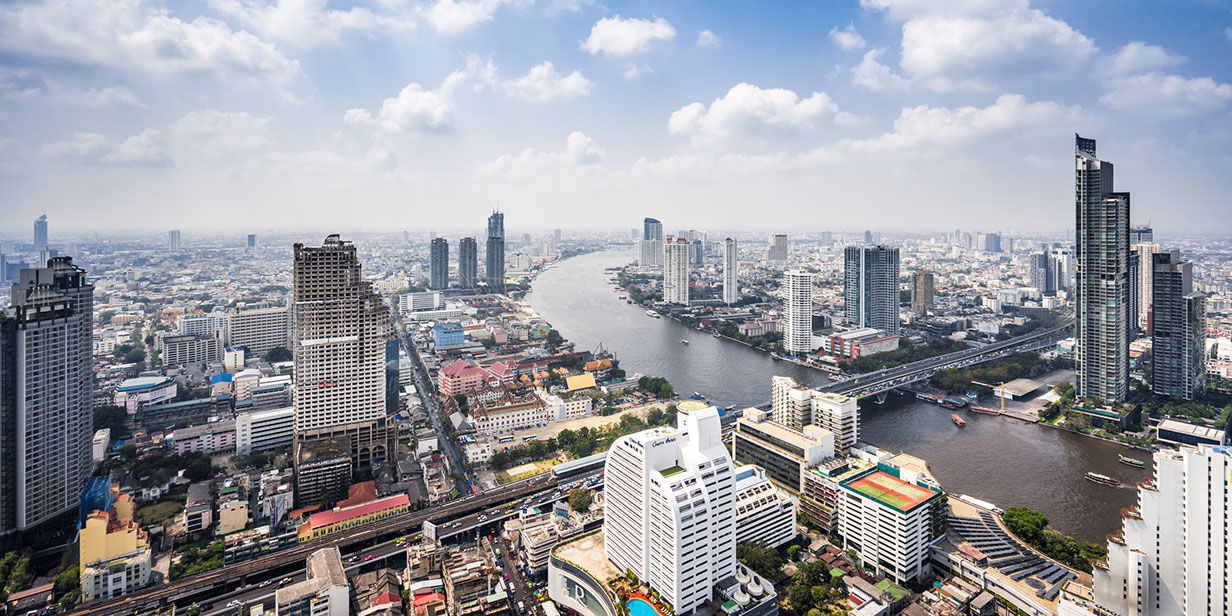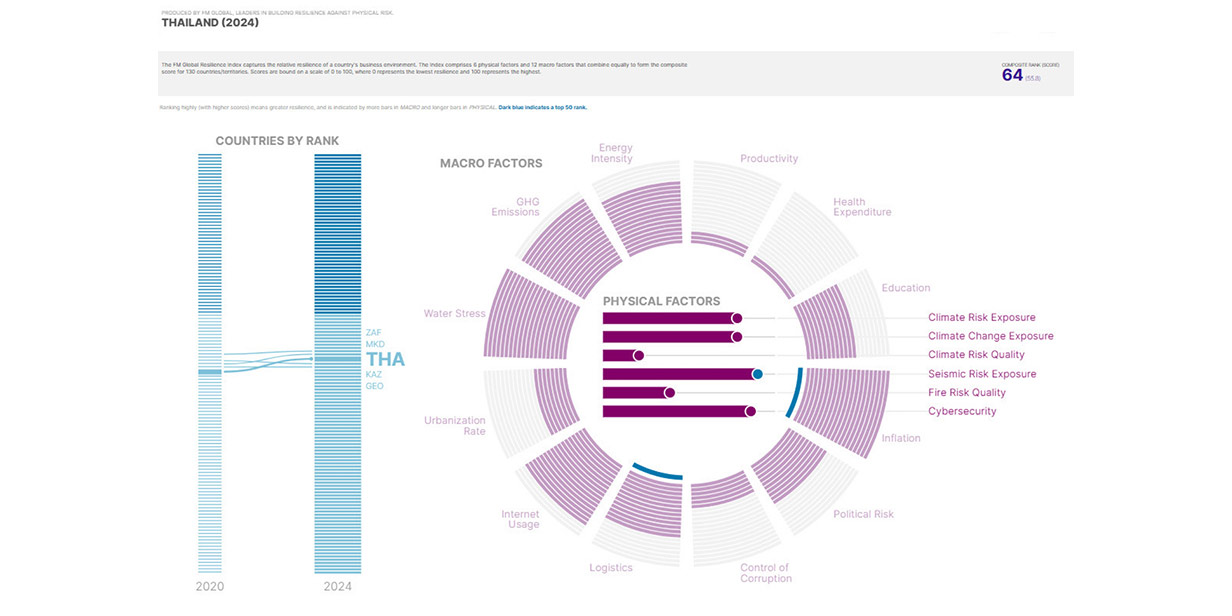Thailand: Identifying a Resilience Sweet Spot

In this series, we take a closer look at how key Asia countries and territories ranked in this year’s FM Resilience Index. The Resilience Index is a tool developed to help understand a country's ability to swiftly recover after disruptive events as well as which risks are manageable.
Ranked at No. 64 on the 2024 FM Resilience Index, Thailand remains a curious combination of business opportunity and risk. Home to a population of more than 71 million people and an export-oriented economy that has successfully transitioned from agriculture to manufacturing and services, Thailand’s Resilience Index ranking reflects an increasing economic maturity balanced against inherent climate-related and legacy political risks.
Thailand’s economic engine continues to hum. And it's more than just tourism – its buoyant manufacturing and services economy contributes more than 90% of its Gross Domestic Product (GDP), dominated by automotive and electronics sectors, with an increasing emphasis on electric vehicles and charging infrastructure, supported by strong investment from China and Japan. Thailand’s status as a thriving regional automotive powerhouse is reflected in its No. 39 ranking for logistics, due to the quality and scale of its export infrastructure and systems.
Balancing its manufacturing and logistics strengths, Thailand ranks at No. 69 for productivity, reflecting an economy still in the throes of transition and digitalisation. This is contrasted by an impressive No. 7 ranking for inflation, which measured at 1.3 per cent in 2023, indicating strong central government control over the economy. This included a range of government subsidies for energy, food, and healthcare designed to ensure a quality of life for its citizens.

Thailand ranks in the bottom half of the Index for political risk and control of corruption, at No. 86 and No. 88 respectively, illuminating the influence of public power on business and a sometimes tumultuous political landscape. It ranks at a solid No. 60 for its commitment to cyber security, and No. 53 for internet usage, suggesting that the country is well-connected and has an above average level of cyber risk mitigation in place.
As with many of its Southeast Asian neighbours, Thailand’s equatorial location presents businesses with a range of climate related risks, supported by a comparatively low rate of urban development, where it ranks No. 111 on the Index despite its rapid industrialisation. This is due, in most part, to a large proportion of its population residing in less developed rural and semi-rural areas.
Thailand works industriously to mitigate the perennial threats posed by natural hazards, including floods, droughts, and tropical storms. It implements a range of disaster preparedness programs, including investments in flood management infrastructure, as well as early warning systems to enhance the resilience of its supply chains. These steps are accompanied by progressive environmental policies targeting air and water pollution, and deforestation, while promoting the transition to renewable energy and sustainable agriculture practices.
Despite these concerted efforts, it continues to face significant challenges. Thailand ranks No. 111 for climate change exposure, which is a measure of the area of land utilised for economic purposes that is exposed to climate impacts by 2050, and No. 96 for climate risk exposure, which measures the area today that is exposed specifically to the risks posed by typhoons and floods.
Thailand is in the top half of the Index for Greenhouse Gas Emissions, which measures estimated national emissions divided by GDP per capita to achieve a score. Its No. 69 ranking again reflects an economy balancing the needs of development alongside the requirement to decarbonise its economy in the coming decade. The country’s energy intensity is ranked No. 88, underscoring the high energy demands of its high-tech industries and densely populated cities.
Thailand’s Index ranking for climate risk quality sits alongside at No. 70, highlighting a commitment to improving building codes and standards. Similarly, Thailand ranks No. 73 for fire risk quality, with the quality of its building design standards and fire safety protocols earning a pass mark. The Thai government has invested in modern fire safety equipment and technology, such as fire alarms, sprinkler systems, and smoke detectors, to reduce the risk of fires and improve response times. But more work needs to be done.
The story of Thailand’s business resilience is typical of economies that have a single dominant urban centre complemented by discrete, concentrated industrial zones, where less developed parts of the economy create a resilience drag.
For property and asset owners seeking to build the resilience of assets or investment in Thailand, the key lies in analysing the macro drivers of resilience at a national economic level while at the same time unpicking the factors that may impact business resilience at a regional or local level where an asset is situated to find a resilience sweet spot.
The future of Thailand's business resilience looks promising, as the country continues to invest in infrastructure, technology, and human capital to support economic growth and adapt to changing global circumstances.
